Game Plan Spread
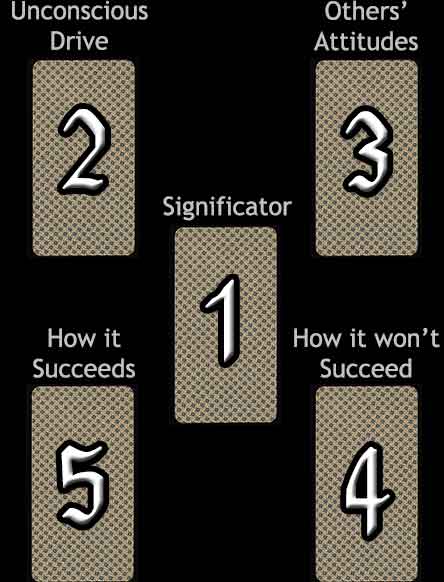
Difficulty: Easy
When a person has a certain plan in mind, this simple five-card spread presents a choice, hinting at what action or attitude should be taken for their plan to succeed, and what should be avoided to help the plan work out for the best.
The initial card is laid in the centre of the layout, the significator. The following four cards are laid out clockwise around the significator.
In this spread, the second card is about what drives the reader, but also says they are not fully conscious of this, perhaps even completely unaware of it. It provides a hint as to the reason they strive for their goal.
The third card uncovers what others think of the reader and their goals. The reader may or may not be aware of this. Sometimes other people factor into the plans (and sometimes they don't).
The fourth card suggests what not to do. If things are permitted to go down this path, the plan will collapse.
The fifth card is a hint as to how to make this plan work out favourably. The idea this card presents should be followed to make the plan successful. It is the differences between Cards #4 & #5 that should be noted, as the differences provide important clues.
Your Game Plan Reading
Unconscious Drive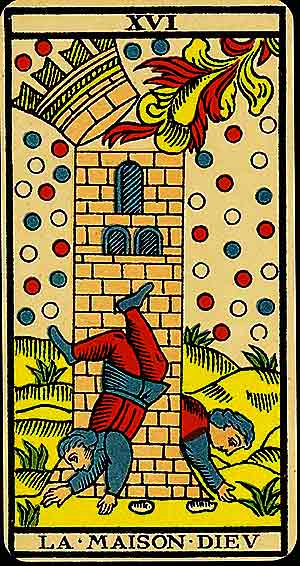 XVI – The Tower (La Maison Dieu) |
External Influences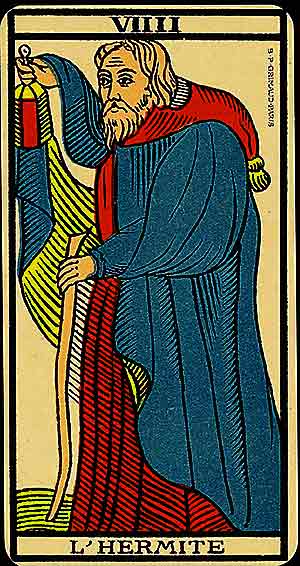 VIIII – The Hermit (L'Hermite) |
|
Significator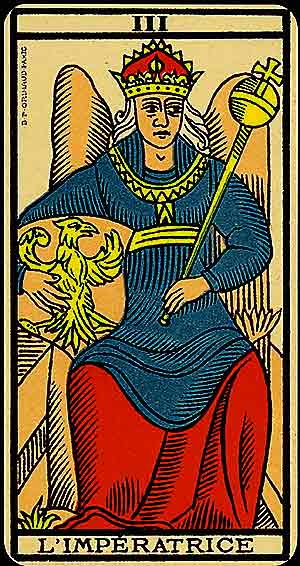 III – The Empress (L'Impératrice) |
||
How it Will Succeed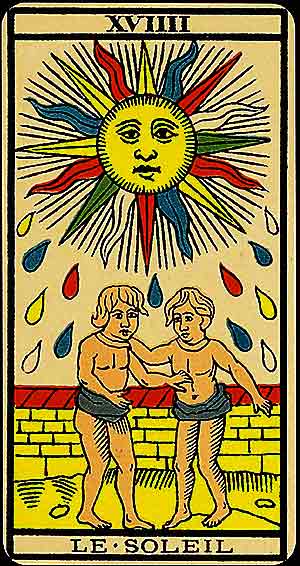 XVIIII – The Sun (Le Soleil) |
How it Will Not Succeed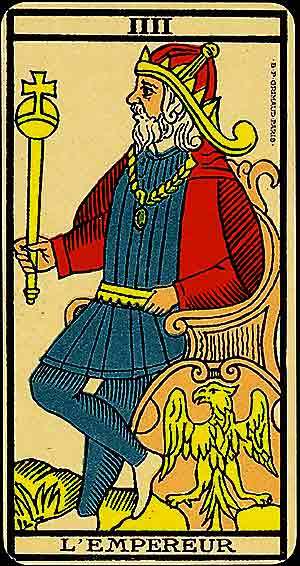 IIII – The Emperor (L'Empereur) |

III – The Empress (L'Impératrice)
This card signifies the creative force in its most abundant and fertile form. It represents growth, nurturing, and the life-giving power of nature.
Symbolism: Her sceptre symbolises authority rooted in creativity and love, while the shield bearing an eagle emphasises vision and protection. The Empress's seated posture on her throne exudes a sensual yet controlled energy, symbolising the harmony between fertility and structure. Her crown and flowing robes represent her connection to divine beauty and earthly abundance.
In Relationships: The blossoming of love or a nurturing, supportive relationship. It is a call to cultivate affection with care and patience.
In Work: A time of prolific creativity and the manifestation of projects. Trust your ability to bring ideas to fruition.
Spiritually: The Empress guides you to honour your divine creative potential, celebrating the interplay between spirit and matter.
When ill-dignified: Overindulgence, stagnation, or excessive control. It warns against smothering growth or being consumed by material concerns.

XVI – The Tower (La Maison Dieu)
The Tower signifies sudden upheaval, revelation, and the destruction of false structures. It is a powerful reminder that chaos and doom often precede transformation and growth.
Symbolism: A tower struck by lightning blows its top as figures fall to the ground. The lightning represents divine intervention, while the tumbling balls and figures symbolise the collapse of illusions and false foundations. The falling crown signifies the downfall of pride. Despite its dramatic imagery, the card hints at liberation and renewal.
In Relationships: A dramatic change, often revealing truths that must be addressed.
In Work: Sudden challenges or shifts that dismantle old systems. It's a chance to rebuild on a stronger foundation.
Spiritually: The Tower urges the seeker to let go of illusions and embrace the profound truth revealed in moments of crisis.
When ill-dignified: Resistance to change, denial, or clinging to crumbling structures. It warns against ignoring the signs of impending transformation.

VIIII – The Hermit (L'Hermite)
The Hermit represents solitude, introspection, and the pursuit of inner wisdom. He invites the seeker to retreat from distractions and focus on the guiding light within.
Symbolism: An old man walks with a staff, holding a lantern that illuminates his path. The lantern symbolises the light of wisdom gained through introspection and experience. His posture suggests humility and patience, while his cloak emphasises withdrawal from the external world.
In Relationships: A period of self-reflection or a need for solitude to gain clarity on emotional matters.
In Work: A time for careful planning and introspection. Wisdom lies in patient deliberation rather than immediate action.
Spiritually: The Hermit invites the seeker to turn inward, embracing solitude as a space for spiritual awakening and self-discovery.
When ill-dignified: Isolation, fear of introspection, or excessive withdrawal. It warns against cutting oneself off from others or resisting inner truth.

IIII – The Emperor (L'Empereur)
The Emperor embodies structure, authority, and the power of order. He is the architect of stability, encouraging discipline and leadership in the material world.
Symbolism: The Emperor's throne and square-shaped setting symbolise structure and the solid foundation of his rulership. The sceptre and orb he holds reflect his control over earthly domains. His gaze is firm and unyielding, emphasising responsibility and focus.
In Relationships: Stability, loyalty, and shared goals define relationships under the Emperor's influence. It may also indicate a partner with strong authoritative traits.
In Work: Success through organisation, discipline, and strategic planning. Leadership is both a gift and a responsibility.
Spiritually: The Emperor teaches the balance between setting boundaries and allowing the divine to flow within the constraints of the physical world.
When ill-dignified: Rigidity, stubbornness, or misuse of power. It warns against being controlling or dismissive of emotional needs.

XVIIII – The Sun (Le Soleil)
The Sun represents joy, success, and clarity. It is the card of illumination and vitality, promising growth, harmony, and the fulfilment of goals through clarity and connection.
Symbolism: Two children stand joyfully under the radiant Sun, surrounded by a protective wall. The Sun itself symbolises divine energy and enlightenment, while the figures reflect innocence, unity, and shared happiness. The vibrant rays evoke abundance and the thriving life force.
In Relationships: Mutual happiness, harmony, and a joyful connection. Relationships flourish under the light of clarity and love.
In Work: Success and recognition achieved through positivity and effort. It suggests a time of clarity and accomplishment.
Spiritually: The Sun calls for embracing the light within and aligning with your true purpose, radiating joy and love outward.
When ill-dignified: Arrogance, burnout, or overexposure. It warns against taking blessings for granted or letting ego overshadow gratitude.